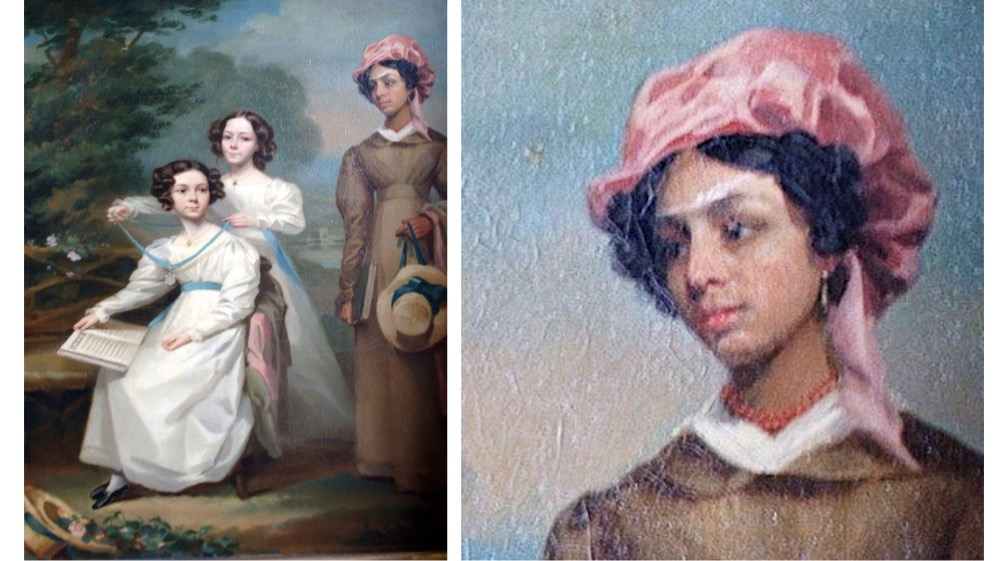This article was originally published on 21 October 2024 at https://nowgrenada.com/2024/10/rebeccas-dolls-connecting-threads-in-18th-century-grenada/. V&A conference group photo added.
Historian John Angus Martin and artist Suelin Low Chew Tung have recently been telling the story of Rebecca Ahmuty Snagg and her 3 wonderful dolls at conferences in London and in Grenada, following articles and assessments by Sue Maidment, Archie O’Neill, Sue Giles and Frances Davies at Bristol Archives, and Avalon Fotheringham at the Victoria and Albert Museum (V&A) South Kensington.
These dolls, the oldest of which is named Quesheeba, were made in Grenada by Rebecca, “a domestic mulatto slave” in the Town of St George c. 1784–1787, who was manumitted in August 1792.
The dolls, kept in the British Ahmuty family’s possession, were donated in 2007 to the British Empire and Commonwealth Museum and passed to the Bristol Archives in 2012 where they are currently housed. Since 2022, Martin and Low Chew Tung have been connecting the dots between Rebecca and 18th-century Grenada to be able to tell her story. The dolls are extraordinary in their makeup and clothing and as artefacts of Grenadian society at that time. Additionally, the dolls’ headwraps are the first 18th-century examples of Madras seen from our side of the world and represent trade links between India, the United Kingdom, and Grenada.

Rebecca’s dolls. Photo: Bristol Archives
On 11 October, Low Chew Tung presented on Rebecca and her dolls at the “Connecting Threads: Fashioning Madras in India and the Caribbean” at the Hochhauser Auditorium, V&A Learning Centre. Less than a week later, Martin presented “Three Dolls, Two Women, and a Letter: A Story of Slavery and an Unlikely Friendship” at the Grenada 50/50 Conference on 17 October at St George’s University.

Malvina Wells with her charges Joanna and Dorothea Macrae, circa 1830. Artist unknown. Image: nrscotland.gov.uk. Detail of Malvina Wells, John Angus Martin’s ancestor
Both presenters told different parts of Rebecca’s story. Low Chew Tung focussed on Rebecca’s workmanship and imported East Indian materials that supported her seamstress trade, while Martin looked at the dolls against the background of Rebecca’s enslavement, the French-Creole society of the time, and the decades-long relationship between Rebecca and her former enslaver. Rebecca Ahmuty Snagg died on Friday, 4 October 1839, “an old and respectable inhabitant of this Colony, after a short illness, much and deservedly regretted.”
In the absence of an image for Rebecca, Martin used an image of his ancestor, Malvina Wells. Born into slavery around 1805 on Carriacou, Wells later worked as a lady’s maid for the Macrae family in Edinburgh, Scotland.
In September, Low Chew Tung was awarded a Karun Thakar Fund Project Grant to research “Rebecca’s Dolls: Indian Textiles and French-Creole Fashion in 18th Century British Grenada.” Martin and Low Chew Tung continue their research into Rebecca’s life, with her dolls providing the means to examine her life in the Town of St George from the French handover to the British, through to Emancipation.

